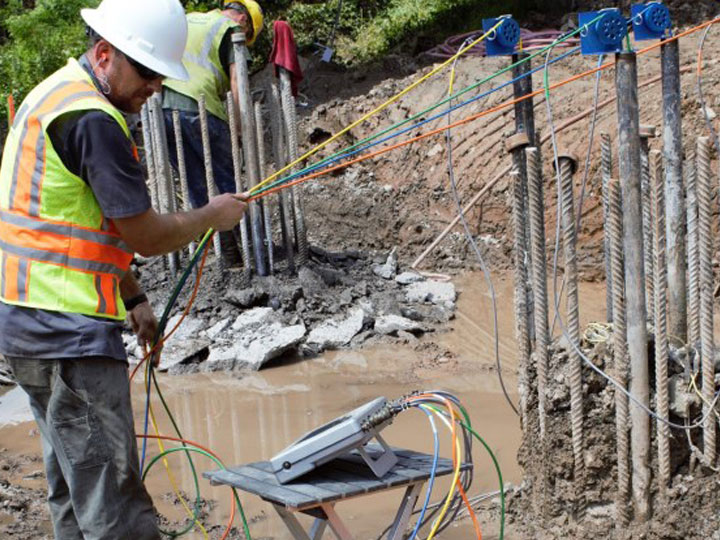Any building rests on some kind of foundation, and therefore it is the most important part of the structure. To make sure the foundation of a building is solid and can withstand the loads coming from above, you need to check its integrity. Today, we will talk about how to check foundation integrity with crosshole sonic logging pile tests.
The Crosshole Sonic Logging test, better known as the CSL test, is one of the surest ways to find out if a pile is good or not. The quickest way so far to estimate the integrity of deep foundation elements, the CSL test is mostly used for checking slurry walls and drilled shafts.
The ingenious crosshole sonic logging test is carried out by sending ultrasonic waves through the foundation and analyzing the results. In CSL, two probes are inserted into the foundation area - one of which fires an ultrasonic pulse (or several) and the other captures it on the other side of the foundation. If there are any irregularities in the foundation, it shows up in the received waveform.
This recorded data, coming out of the second, receiver probe, is called the Crosshole Tomography (CT). As sound carries out differently through different mediums, the CT data will show the size, shape, magnitude, and location of any irregularities (read: defects) in the poured concrete, and it would take only a few minutes. This is why CSL/CT is so popular nowadays.
Most of the time, slurry walls and drilled shafts develop many issues. These problems almost always affect their integrity. They are:
Doing stringent quality assurance work on the concrete immediately after pouring can reduce the chance of these issues happening. However, one cannot prevent chances, and so, later assessment of possible defects is very necessary. This is where foundation integrity tests come in. And none are better at this than the CSL test.
There are three major phases of the crosshole logging pile test procedure. We discuss them as follows.
In this phase, two access tubes are installed in the foundation piles before concreting begins. Generally, the CSL test needs 35 to 50 mm pipes, PVC steel. The pipes are tied to the reinforcement cages in the formwork, on the insides.
You can install more tubes if you want, if you need to increase the resolution of the result image, or if the structure is quite large. You must, however, install at least two tubes. Once they are installed, fill the tubes with water.
Hydrophones are used to send and receive the 'pings' that will go through the pile, creating a sonic image of it. A source and a receiver hydrophone (at least one) are lowered into the bottom of the tubes.
A pulse is fired from the source hydrophone and is sensed by the receiver hydrophone(s) across the pile, sending the data to a recorder unit outside the pile. Then we figure out what the data means.
This process is repeated as the hydrophone units are raised bit by bit, to form a total cross-sectional image of the pile. Generally, the data is taken every 6 cm.
The results in the CSL test are basically the time it took for the ultrasonic pulse to cross the distance, and its amplitude. The basic interpretation are follows:
